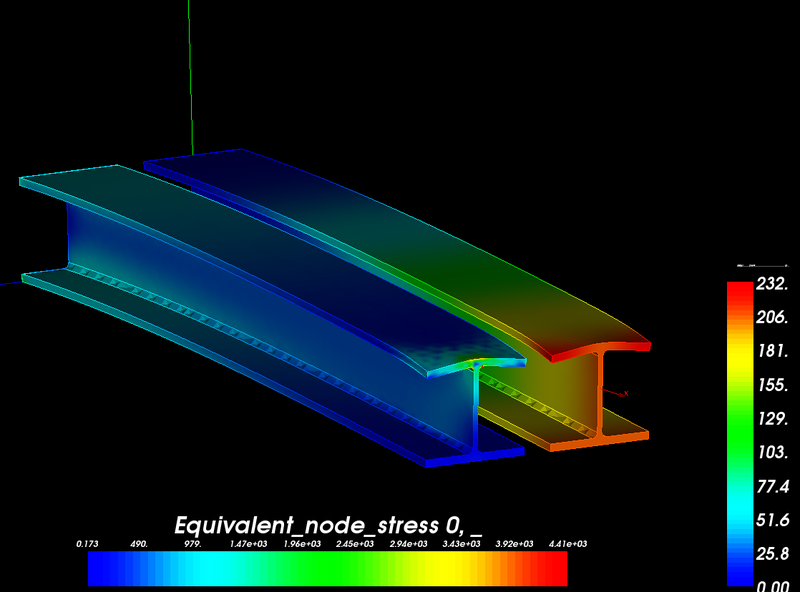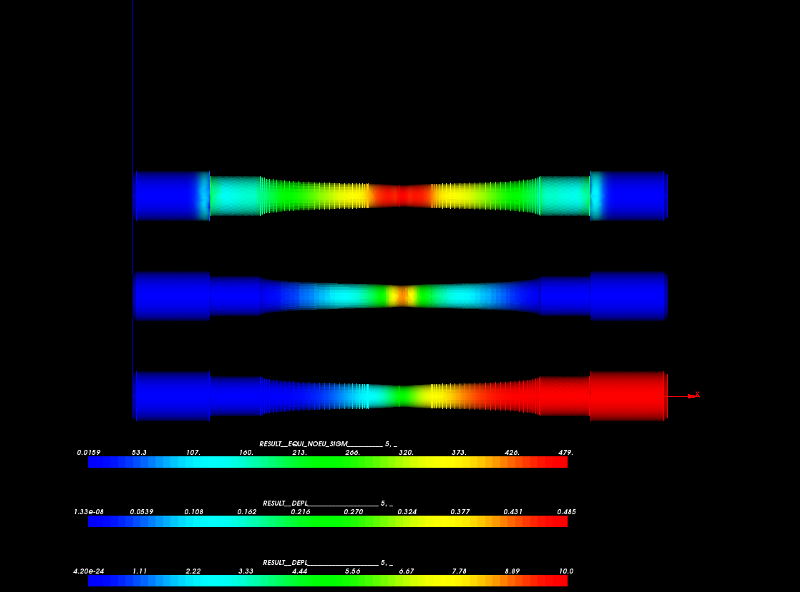Difference between revisions of "Contrib:Claws/Code Aster/9.04cases"
| (One intermediate revision by the same user not shown) | |||
| Line 1: | Line 1: | ||
| + | [[Contrib:Claws/Code_Aster|'''<-Link: Back to Contrib:Claws/Code_Aster''']] <br /> | ||
| + | |||
| + | |||
''Software used:'' | ''Software used:'' | ||
Latest revision as of 14:57, 27 January 2010
<-Link: Back to Contrib:Claws/Code_Aster
Software used:
- Ubuntu 8.10
- Salomé 4.1.4 for preparation of the geometry and meshing
- Code_Aster 9.04 32bit, compiled with the Intel compiler for calculation
Computer used:
- Dual core Intel 2.4GHz with 4G of RAM
I have tried to comment the *.comm files as well as I could, but I am far from an expert on C_A so use these files only as an example of the file structure/the C_A way of thinking.
Note: These cases are for loading into ASTK and not for running from e.g. SaloméMECA - Salomé should only be used for viewing the geometry, mesh and postprocessing the result files.
I hope these cases prove valuable for learning a bit more about C_A
These are my current uploads:
- MathCAD_-_Beam.xmcd.pdf This is the basis for the calculations. It is used to compare the results obtained from C_A
- Study_Beam-linaer.tar.gz H-Beam imposed with a ridiculous load, linear static/elastic. Linear mesh
- Study_Beam-quad.tar.gz This is the same calculation, but with a quadratic mesh
- Study_Beam-lin-ensight.tar.gz This is the same calculation, with a quadratic mesh but with Ensight® output format
- Study_Beam-nonlinear.tar.gz This is a nonlinear/plasticity calculation of the above study - It relies heavily on the tutorial of PCarrico on plasticity, so refer to this one if my comments are inadequate.
- This is a study on a tensile strength test I did on first semester - I can't remember the forces required, but that it snapped at about 10mm. This is a nonlinear calculation using the same Alu. material used in the above calculation.
This is an example of contact - the aluminum rod is pressing down on a solid steel block. The example introduces an new concept (for me): creating a linear mesh in Salomé, loading and converting this mesh in C_A to a quadratic mesh, run the calculation and the project the results back to the linear mesh. This saves space on the mesh/result file but retains the finer results from the quadratic mesh. The *.comm file is documented to some degree, but some concepts I don't fully understand yet.


